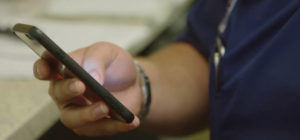If there’s one thing hospital leadership knows about implementing new technology, it’s how difficult it can be to drive adoption. Often, it’s not just one nurse or physician that’s hesitant to try out the latest tool—sometimes entire units or departments will forego engaging with a new system for fear of wreaking havoc on existing workflows. But as legacy technology becomes obsolete, it’s important for healthcare systems to stay ahead of the curve to maintain safe and high-quality patient care.
With all that being said, rolling out a new technology needs to be done with extreme care and consideration. HCA Healthcare affiliate Chippenham Hospital and its sister facility, Johnston-Willis Hospital, went through this process three years ago when they implemented a new clinical communication and collaboration (CC&C) platform across their facilities. They ended up having a wildly successful adoption rate, with entire units happily sunsetting outmoded technology in favor of their new platform, easily accessible by smartphone.
Adoption Through Education
Ultimately, one the keys to their successful adoption have been their comprehensive education campaign, targeted at both staff and patients. Many healthcare organizations use printed materials, such as flyers, handouts, brochures and posters to alert colleagues to the coming changes in their technology. While this is a classic, effective method, it doesn’t necessarily engage staff or encourage questions and feedback.
That’s why the leadership team at Chippenham Hospital developed a course that users could sign up for at their convenience in the month leading up to the go-live, in order to demonstrate the real value of this new technology.
“When they came into class, everybody grabbed a phone and could log in with their own credentials so that they could follow along,” said Christina George, Director of Clinical Informatics at Chippenham Hospital. “Users tend to learn better with devices in front of them.”
By creating a setting where users could experiment with the application outside the context of critical patient care, they could move through all of the myriad capabilities and features at their own pace.
“It also helped us weed out anybody that we may have missed in the setup,” George said. “That way when we went live, we had very few people left to be set up.”
Out With the Old (Devices)
It goes without saying that this early exposure to cutting-edge smartphone technology got the staff at Chippenham Hospital excited to transition from their legacy devices. Once the new users were comfortable with the platform and with handling a smartphone, it was a relatively small step to sunset the previous modes of communication.
“The most surprising [takeaway] was how quick our [emergency department] embraced it,” George said of cycling out the ED headsets. “It allows them to reach out to whomever they need while they’re documenting, and work efficiently without having to sit on hold or request a callback.”
But the headsets in Chippenham’s emergency department weren’t the only devices booted by clinical communication technology on a smartphone app.
Because Chippenham Hospital is just down the road from its sister facility, Johnston-Willis Hospital, they frequently need to communicate between hospitals for things like interdisciplinary care, supply chain and, most urgently, patient transfers. Just last year they rolled out their CC&C platform to their local transfer center.
“It saves the transfer center from having to page,” George said. “We all know paging is not reliable anymore. This way the transfer center knows, ‘Did they get my message? Did they read it?’ You don’t get that kind of feedback from a pager.”
Clearer Workflows, Better Outcomes
Chippenham Hospital did a lot of things right when they rolled out MH-CURE. By communicating, with plenty of notice, about major changes to the communication methods and technology, they minimized staff reticence towards adoption. Comprehensive training classes, coupled with an emphasis on the new tool being a single-device solution, meant staff was prepared when their older devices were phased out. This also meant that hospital leadership didn’t have to struggle to enforce hospital protocol or desperately encourage adoption—users were excited to get started.
Many of us find value in using smartphones in our everyday, personal lives. So, it stands to reason that we would find value in leveraging them in the workplace. By putting the proper parameters in place to emphasize learning and preparation, Chippenham Hospital demonstrated that care for their staff results in better care for their patients.




